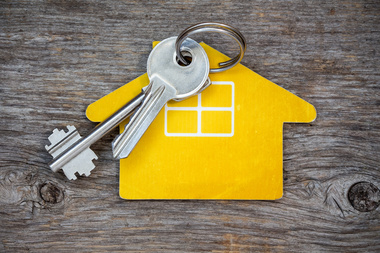Not only are there hundreds of institutions offering mortgages, it can seem as though there are dozens of different types of mortgages themselves. Different interest rates, different lengths and other features can be confusing. This article describes some of the different options you may encounter as you shop for a mortgage. As you review your options, keep two thoughts in mind:
- How long do you expect to live in the home?
- What is your tolerance for monthly payments increasing?
Fixed-Rate Mortgages 
As the name implies, with a fixed-rate mortgage, the interest rate is set at the time you take out the mortgage and remains constant over the life of the mortgage. The monthly payment level also remains constant. Knowing what your payment will be can be reassuring.
Each monthly payment consists of interest and principal, with early-year payments being primarily interest and payments toward the end of the mortgage being mostly principal. Most of the mortgage pay down comes late in the mortgage period.
Most institutions offer fixed-rate mortgages of 30 years and 15 years. The benefit of the shorter 15-year mortgage is that after 15 years you will have paid off the mortgage loan and you own your home free and clear. You will also pay less interest over the life of the mortgage. The negative is that your monthly payments will be higher.
| Comparing a 15-year mortgage and a 30-year mortgage with equal interest rates | ||
| 15-year mortgage | 30-year mortgage | |
| Mortgage amount | $100,000 | $100,000 |
| Interest rate | 3.75% | 4.75% |
| Monthly payments | $727.22 | $521.65 |
| Total monthly payments over the term of the mortgage | $130,900 | $187,791 |
| Total principal paid over the term of the mortgage | $100,000.00 | $ 100,000.00 |
| Total interest paid over the term of the mortgage | $30,900 | $87,791 |
Choosing the term of a fixed-rate mortgage is usually a function of what level of monthly payments you can afford and how anxious you are to pay off the entire mortgage.
Adjustable Rate Mortgages (ARMs)
With an adjustable-rate mortgage, the interest rate and monthly payments can change as interest rates change. The rate is fixed initially and is subject to being reset based on changes in some interest rate benchmark. The big benefit to the borrower is that usually ARMs have interest rates (at least initially) that are lower than the rates on fixed rate mortgages. Sometimes it can even be 1 1/2 to 2 1/2% less.
There are several features of ARMs that you should evaluate if you are considering this type of mortgage.
- Initial rate. Be careful if the initial rate seems real low. It could be a “teaser” rate that only lasts for a short time and then the rate is adjusted upward. At a minimum, ask what the rate would be adjusted to if the initial rate ended today.
- Benchmark the ARM is pegged to. ARM rates are usually tied to some “published” index that reflects the general interest rate market. Usually the ARM rate is adjusted to that benchmark plus some level of margin. Ask the lender how this works and try to get an understanding of how the benchmark rate has changed recently.
- The cap. Most ARMs have limits on how much the rate can rise in any one year and some ARMs have a limit to what the rate can rise to over the course of the mortgage. Understanding how the caps work will let you know “how bad it can get” if rates rise substantially.
- Length of the rate periods. When you look at ARMs you may find there are terms like 10/1, 7/1, 4/1 and the like. These refer to how long the initial rate lasts and how often the rate is adjusted after that.
ARms are attractive because of their lower initial rate. Your risk is that your rate and monthly payment will rise in the future. If you are comfortable that you can accept an increased payment or if you think you will be moving in a relatively short time, the savings with an ARM can be substantial.
Other Issues
Negative amortization. Amortization refers to the process of paying down a mortgage. Some lenders offer mortgages with lower monthly payments than what is needed to pay interest and ultimately pay off the mortgage. This means the amount due on your mortgage increases over time. Avoid this type of mortgage.
Balloon mortgages. Balloon mortgages are similar to fixed-rate mortgages with steady monthly payments using a 15- or 30-year amortization. However, with a balloon, there’s a large final payment due at the end. Most balloon mortgages are for 3 to 7 years. They usually offer lower interest rates than the traditional 15- or 30-year fixed rate mortgage. But, remember that with a balloon, your mortgage will be due on a given date and you will have to do something.
This is just the tip of the iceberg when it comes to mortgages. For more detailed info that pertains to your unique situation, give us a call today.


